According to an estimate, there are 8.7 million species of animals on Earth. According to Frontiers, out of all these species, over the years, only 40 animal species have been domesticated by humans, including well-known examples like cats, cattle, chickens, and horses, etc.
But one species that has become an integral part of human lives since we know animals is the dog. These pets have participated with humans in almost every part of their lives, from being a family dog to a ferocious hunting dog, in which their size has been more than useful to catch, intimidate, and even tackle the prey.
In this article, we will discuss 7 hunting dog breeds that come in a massive size.
Hunting Large Dog Breeds
1. Labrador Retriever
Labrador Retrievers might be known today as friendly family dogs, but their roots run deep in the world of hunting dogs. Originally bred in the UK from strong fishing dogs brought over from Newfoundland, Labs were made to work, especially around water.
This gun dog breed was perfect for helping hunters retrieve birds and fish from lakes and rivers, thanks to its love for swimming and natural retrieving instincts, giving them an edge over other dogs.
Some people still think black or chocolate Labs are harder to train than yellow ones, but science says that’s just a myth—coat color doesn’t affect their smarts or behavior. What really matters is how they’re raised and trained.
Just watch out for their ears—those floppy flaps can trap water and cause infections after a swim, according to PetMD. Overall, Labradors are friendly dogs and gentle-hearted hunters with a hardworking soul.
2. Golden Retriever
Golden Retrievers were once the prized hunting small game dog of Scottish nobility, bred to retrieve small game birds with care and precision. The sharp sense of smell and natural love for water of these bird dogs made them perfect for tracking and fetching birds across long distances.
However, over time, the breed has shifted more toward being family pets and show dogs than working hunting dogs.
Compared to Labradors and other retriever breeds, Goldens are often slower to mature, meaning it takes longer to train them for the field, says Wikipedia. Their beautiful, long coats also require more grooming, especially after muddy or rugged hunts.
While still capable hunters, it’s now harder to find Golden Retrievers from strong working lines. Even so, their loyal hearts and outdoor spirit still echo their noble hunting past.
3. Weimaraner
Bred by German nobles in the early 1800s, the Weimaraner is a tough dog that was originally designed to hunt formidable prey like boar, bear, and deer, making it a true powerhouse among large hunting dog breeds, as Britannica stated.
As big game hunting declined, the breed was skillfully adapted for upland bird hunting, thanks to its sharp instincts and athletic build. With a sleek silver-gray coat and piercing eyes, the Weimaraner is as striking as it is capable.
Though affectionate and gentle with family—especially kids—they can be aloof with other pets and need early socialization. Their high energy and mental needs mean these energetic dogs thrive on interactive play and training.

While they’re elegant hunters, owners should note their fast-growing nails and potential eye issues like entropion, which require regular care and vet checkups.
4. Vizsla
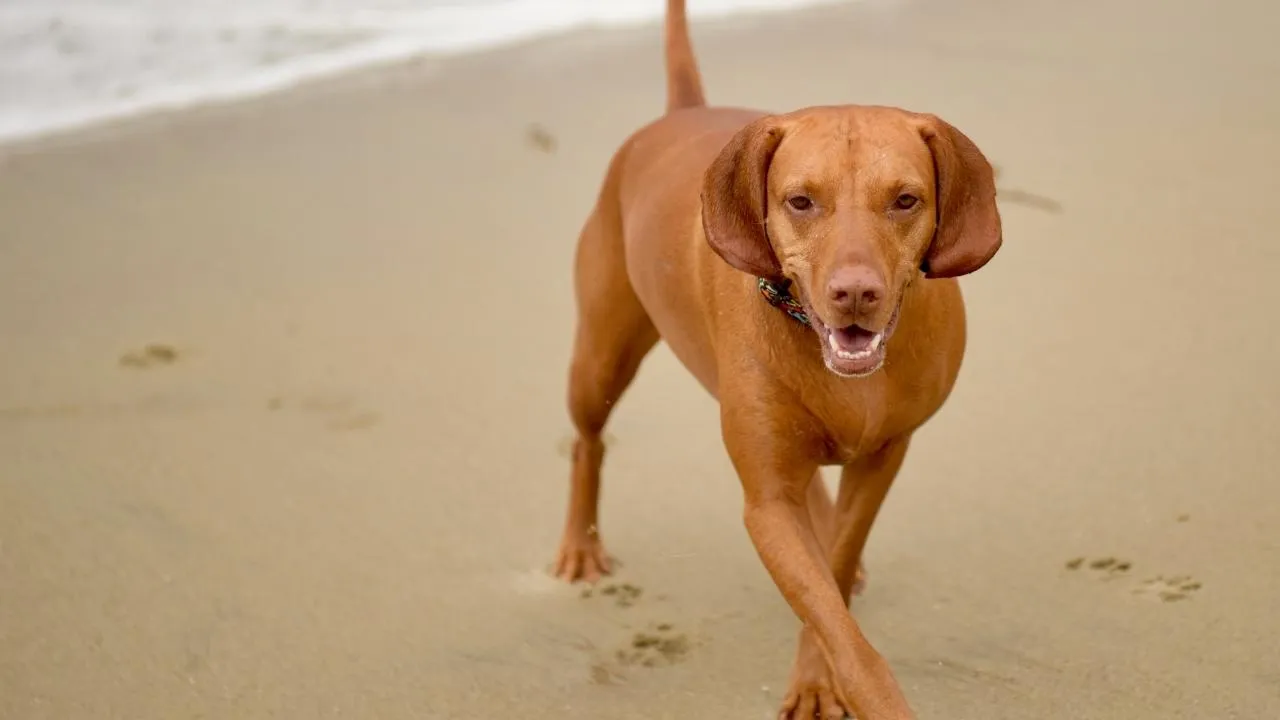
With roots tracing back over a thousand years to the Magyars of Hungary, the Vizsla is one of the oldest and most versatile hunting dog breeds in the world. Though medium in size, they’re the smallest among pointer-retriever breeds—a huge advantage when navigating tight brush or dense forest during hunts.
These sleek, rust-colored athletes are incredibly agile and excel as all-around gun dogs—pointing, flushing, and retrieving both on land and in water.
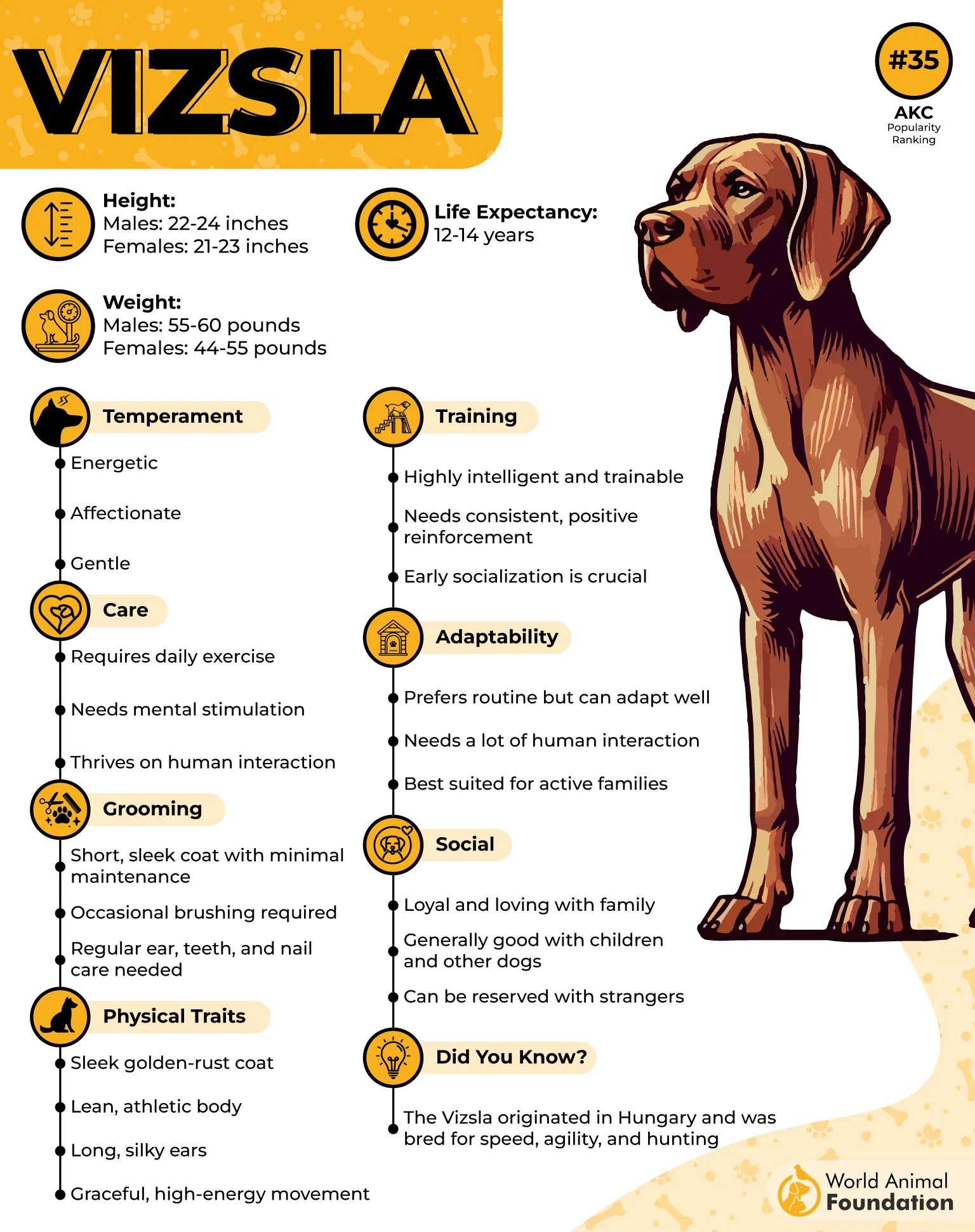
Known for their near-silent stalking and precision pointer posture that are quite beneficial in dog hunting, Vizslas make good hunting dogs for hunters who value stealth and control.
Their powerful noses and eagerness to work make them exceptional trackers. While generally healthy, they can be prone to hip dysplasia, so careful breeding and regular vet checks are essential.
5. German Shorthaired Pointer
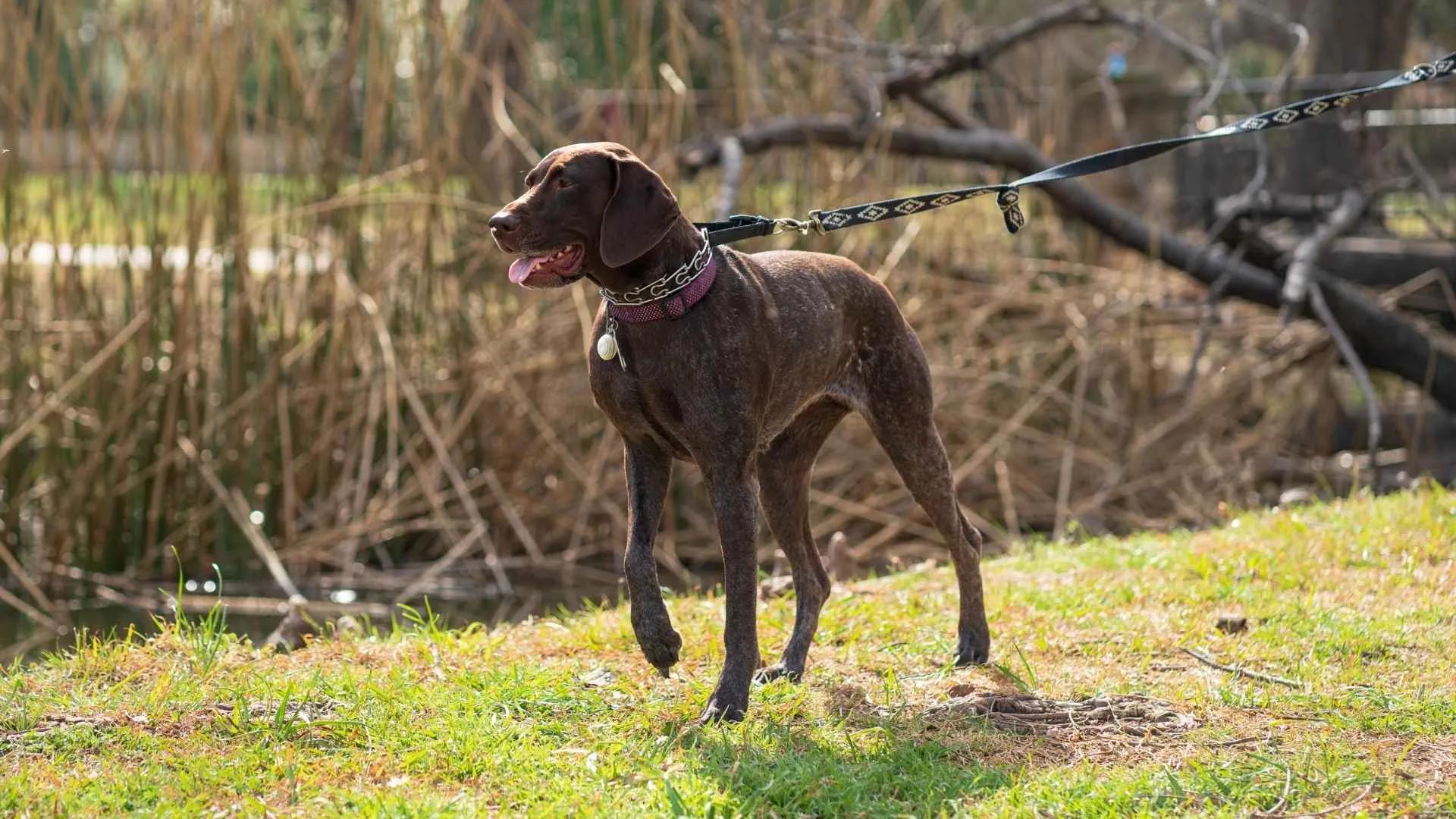
These dogs are elegant, high-energy, hunting dogs celebrated for their speed, stamina, and sharp instincts. GSP dogs are best known for their signature pointing stance—standing still with their nose, tail, and body aligned toward the scent of prey.
Unlike many other bird dogs that immediately chase, GSPs patiently wait for the hunter’s cue before flushing out game, making them precise and obedient partners in the field.
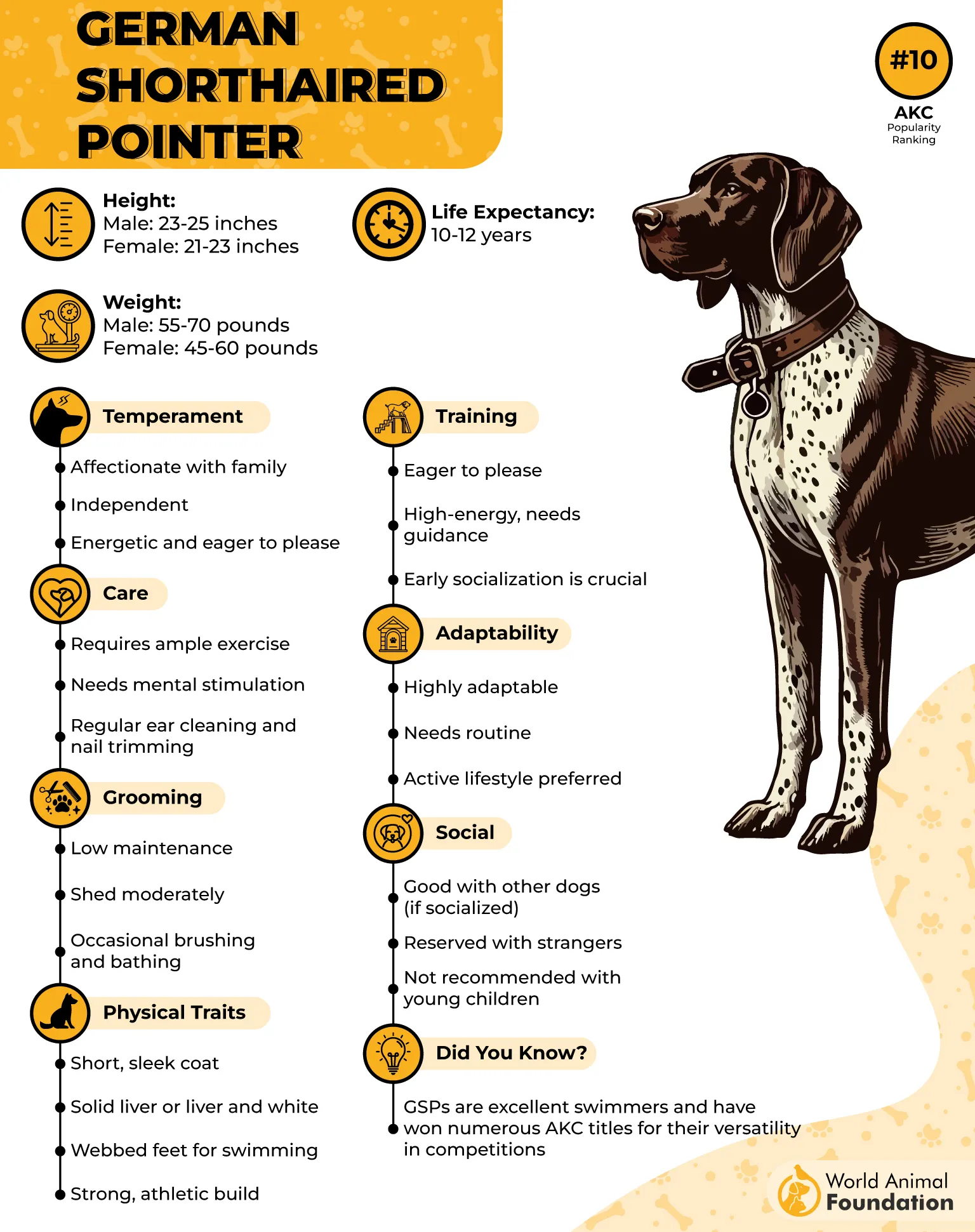
Their coats are usually a mix of liver and white or black and white, with noses that always match their coat color—a unique breed trait. Their coats are usually shorter in length compared to German Wirehaired Pointers.
While they are exceptional athletes, GSPs can be prone to health issues like hip dysplasia and progressive retinal atrophy. Still, with the right care, they remain loyal, versatile, and highly trainable hunting companions.
6. Chesapeake Bay Retriever
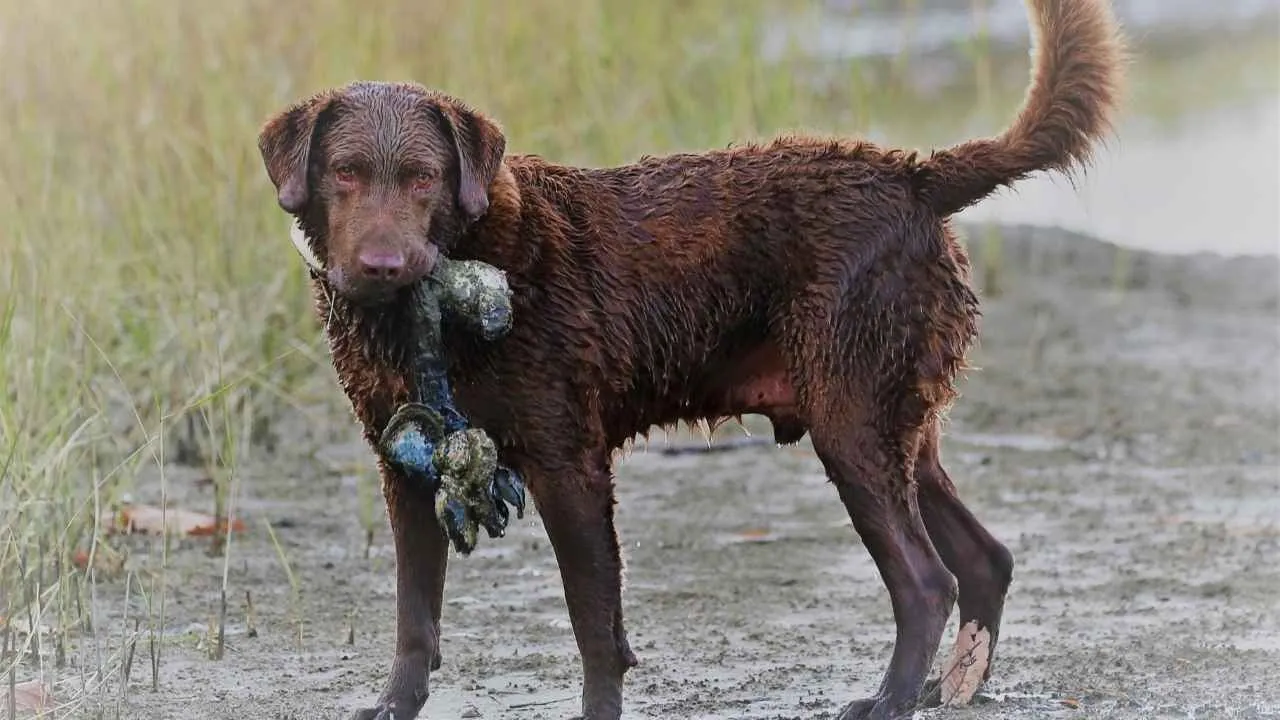
Chesapeake Bay Retrievers, affectionately known as “Chessies,” are powerful and determined waterfowl hunting dogs bred in Maryland to retrieve waterfowl from the icy waters of the Chesapeake Bay.
Their story is as legendary as their skill—it’s said their ancestors were two Newfoundland dogs who survived an English shipwreck in the early 1800s and went on to help develop the breed.
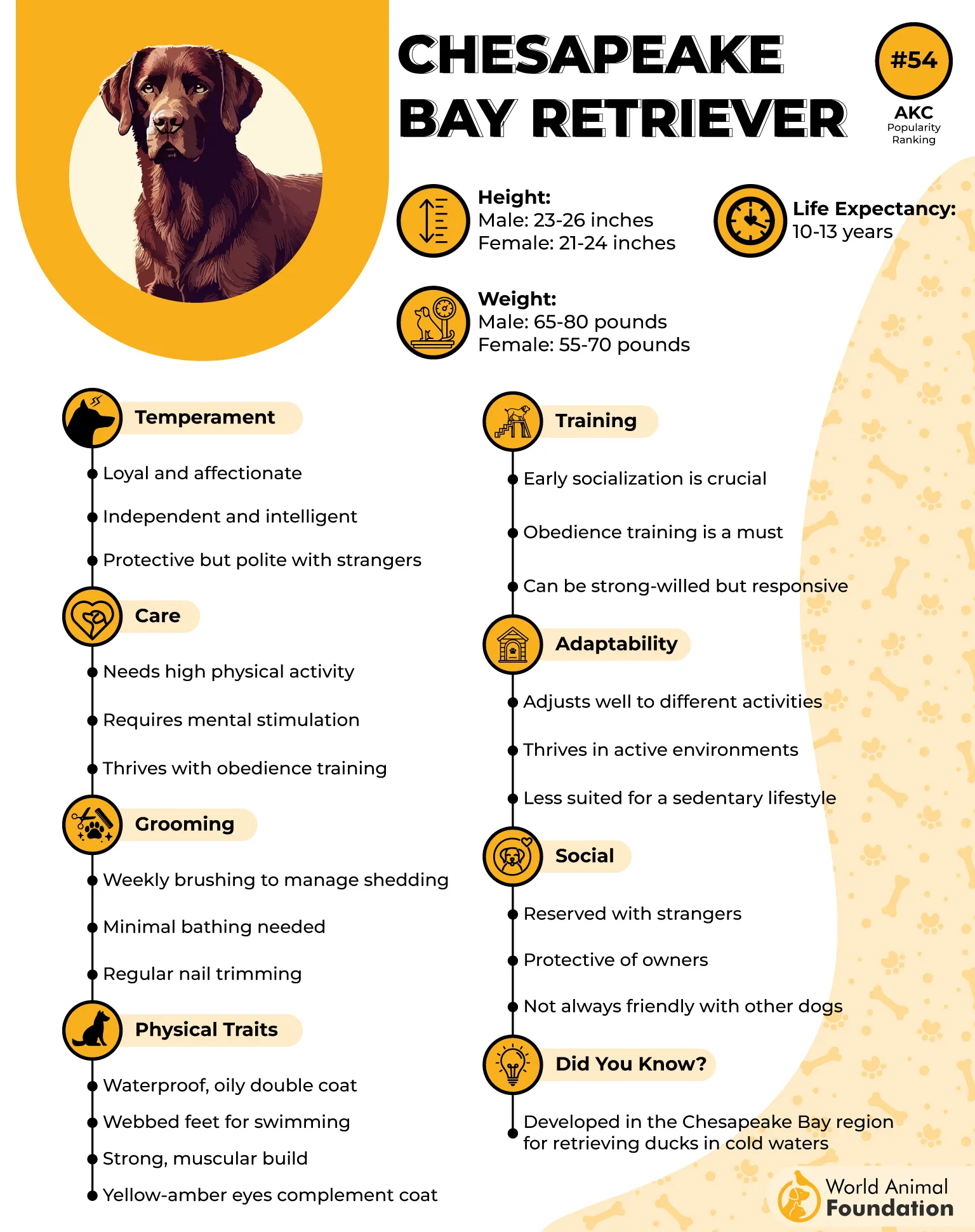
Chessies are tough, tireless, and built for cold-weather hunts, especially duck retrieval, hunting waterfowl, pointing upland birds, and hunting birds. At home, they are loyal and affectionate, though they take their work seriously in the field.
One important health concern for this breed is gastric torsion, or bloat, a life-threatening condition linked to their deep chests.
Fun fact: Actor Paul Walker owned a Chessie named Boone, who even appeared with him in Into the Blue!
7. Bluetick Coonhound
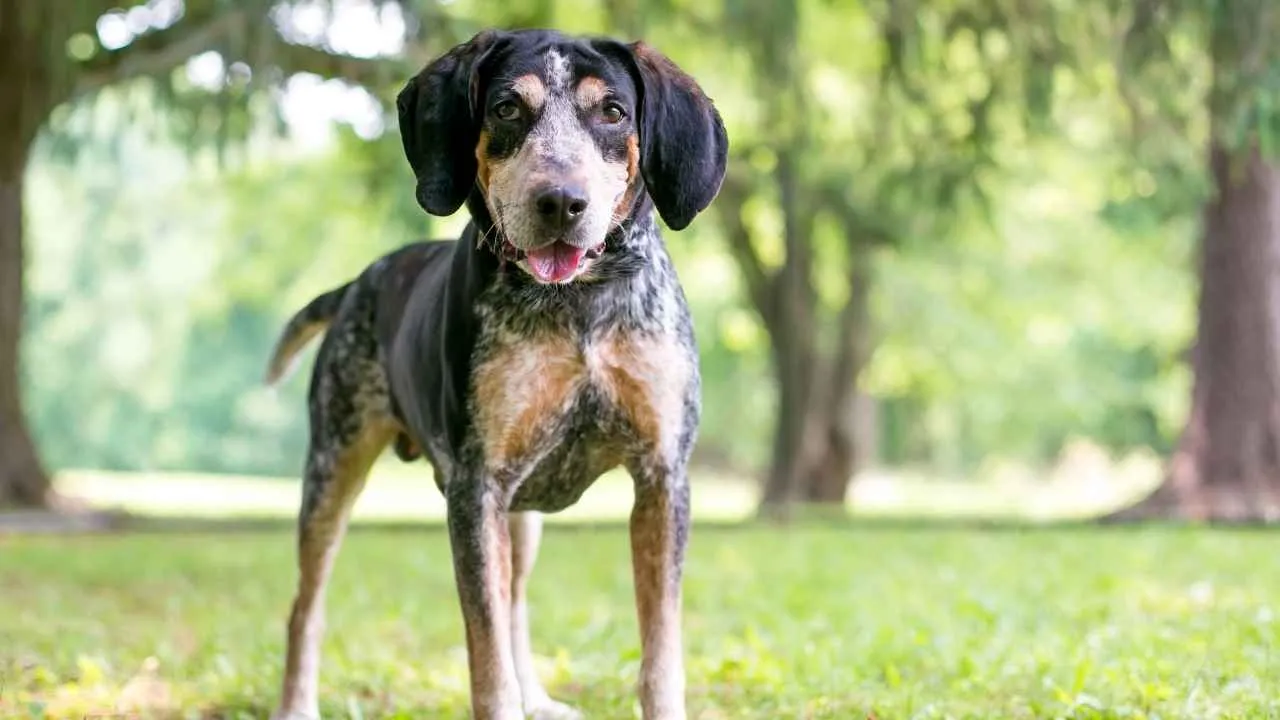
Bluetick Coonhounds are American-born hunters with a noble legacy—descendants of French staghounds gifted to George Washington by Marquis de Lafayette. Bred for endurance and scenting power, Blueticks were originally used to track not only raccoons but also larger and more dangerous game like bears, wild boars, and cougars.
Their remarkable sense of smell and determination make them relentless trackers, often following a scent trail for hours or even days.
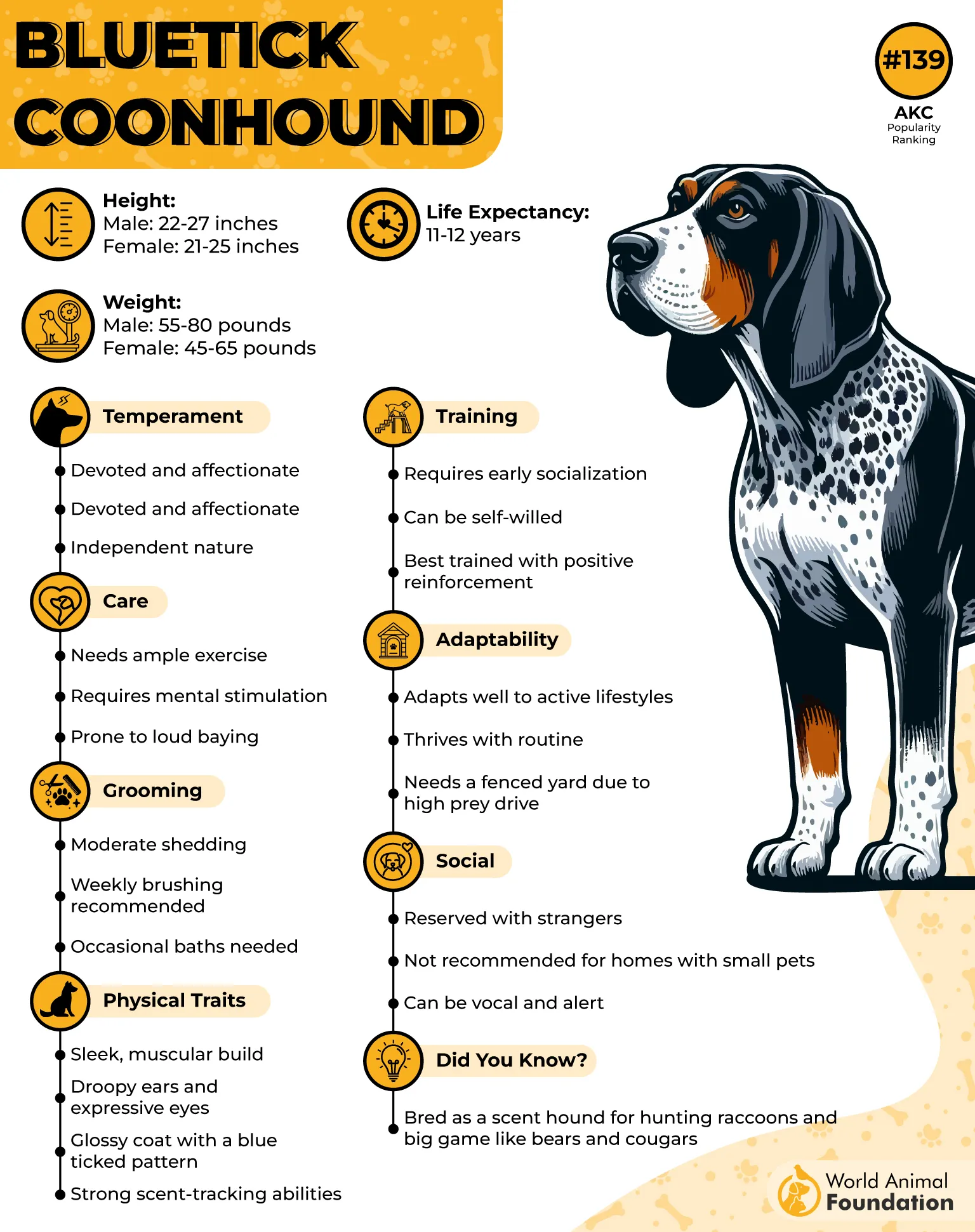
While they can thrive as affectionate, good family dogs, Blueticks need plenty of exercise, mental stimulation, and space to express their natural instincts.
Their signature baying—a deep, melodious howl—adds charm in the woods, but may not be as welcome in close-knit neighborhoods, as stated by the American Kennel Club (AKC). Early training and secure fencing are musts for this bold and spirited breed.
Conclusion
Hunting large dog breeds is far more than just big dogs and large breeds having loud barks—they are loyal, intelligent, and versatile dogs that are deeply rooted in centuries of companionship with humans. Whether bred to dive into freezing waters to retrieve birds, point silently at hidden birds, or track dangerous upland game for miles, these dogs represent the very best of instinct, endurance, and dedication.
From the noble Weimaraner and ever-reliable Labrador to the fiery Vizsla and booming Bluetick Coonhound, each breed brings its own unique strengths and stories to the field. While their roles in modern life may have evolved—many now warming couches instead of chasing prey—their hunting hearts still beat strong.
For anyone seeking a capable partner in the wild or an active, devoted family companion, these large hunting breeds continue to prove they are built not only for the hunt but also for the heart.

